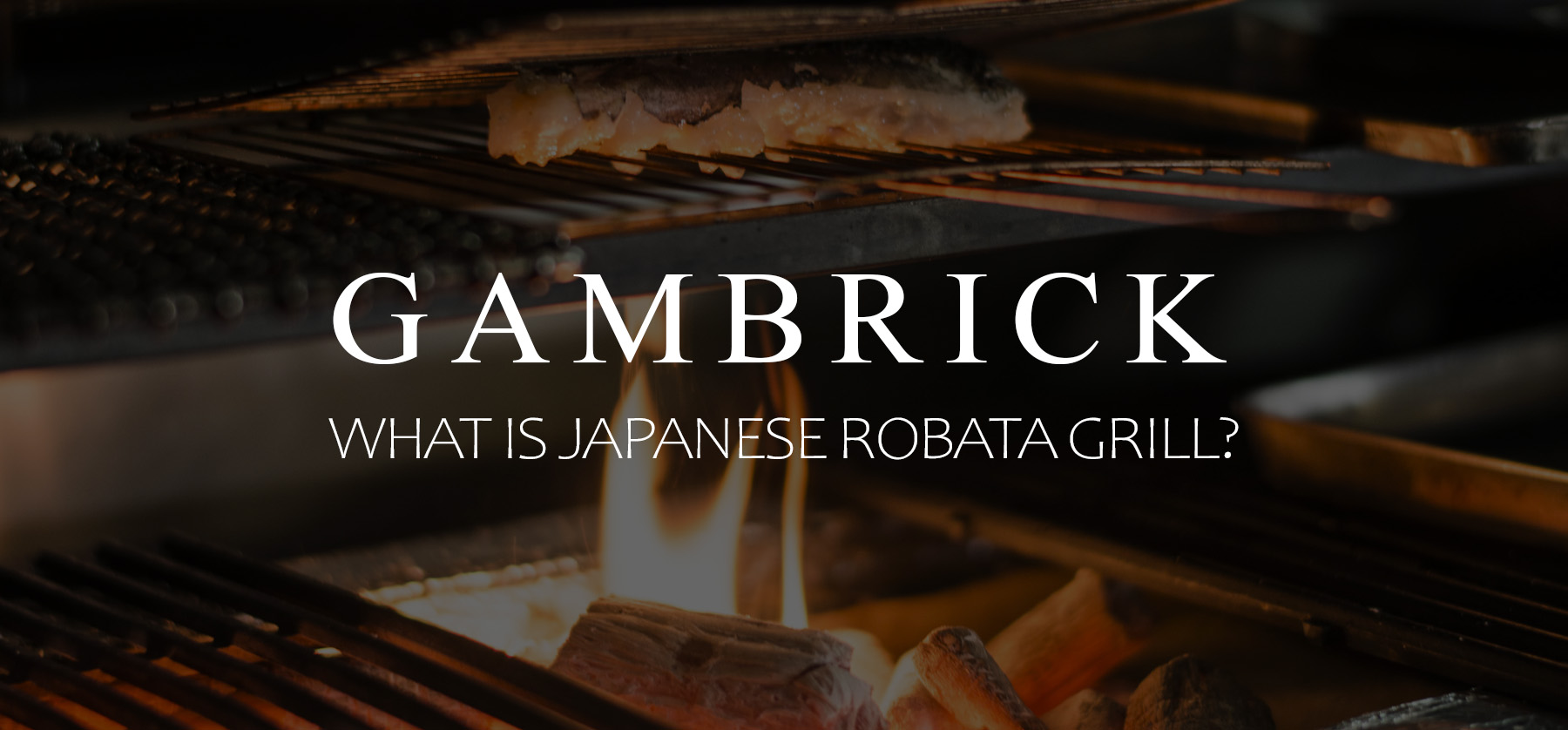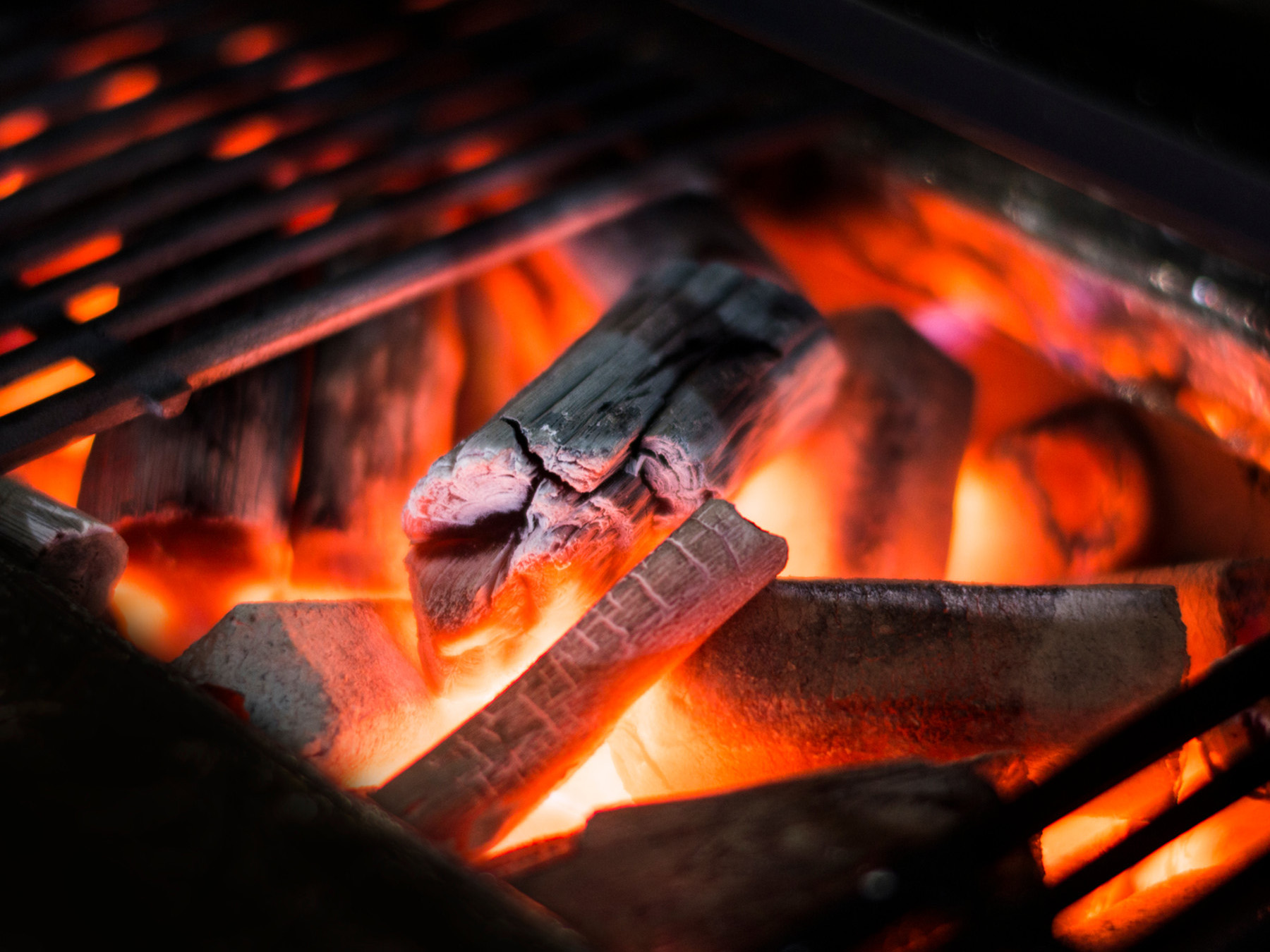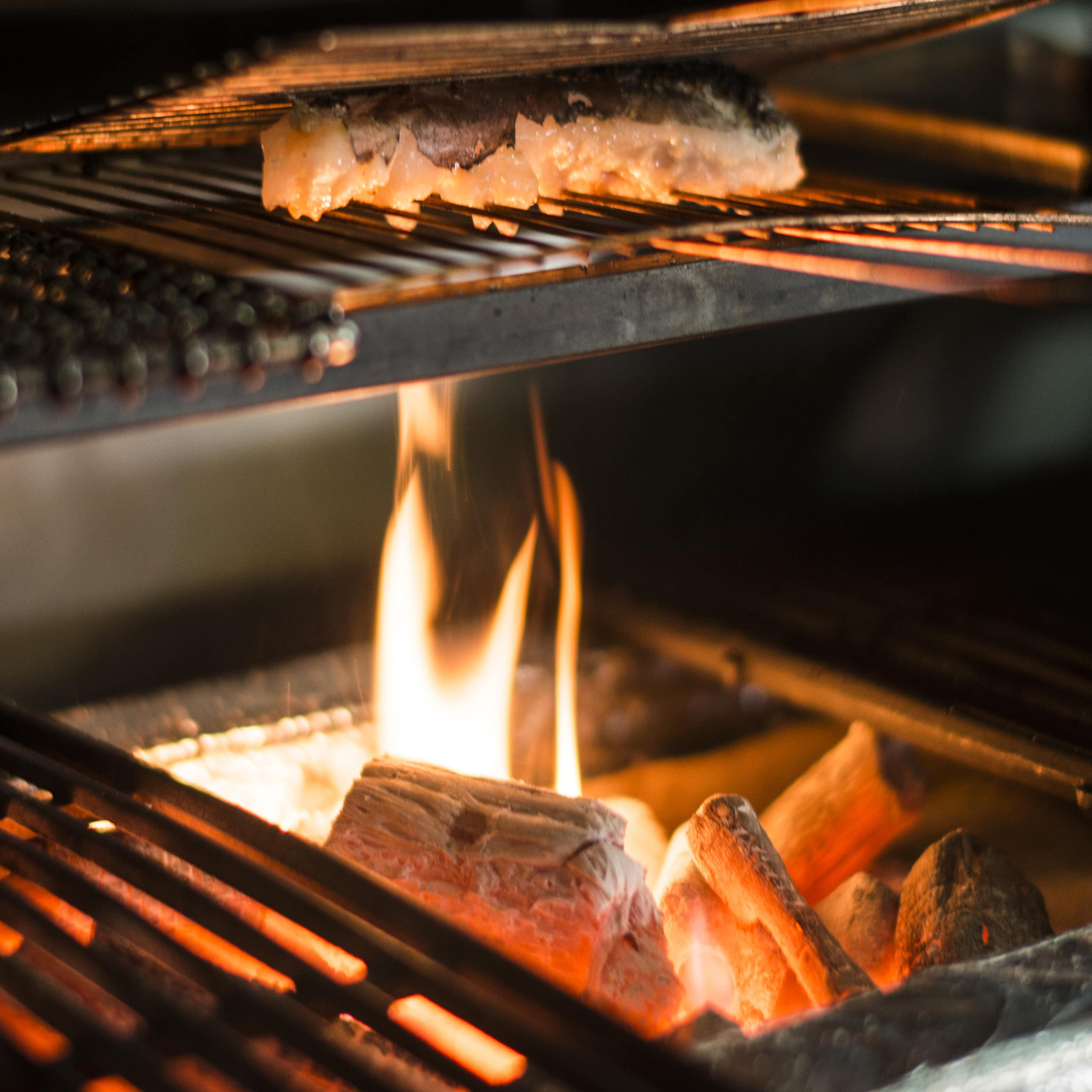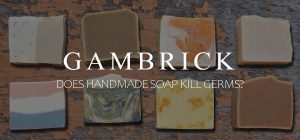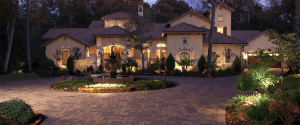What Is Japanese Robata Grill?
Japanese Robata is short for “Robatayaki”, which means fireside cooking in Japanese cuisine. Robata is a method of cooking various foods over hot charcoal on a wide and flat open flame, similar to barbecuing. Meat, seafood and vegetables are cooked on a Robata grill, which is basically a steel grate suspended about 8-12 inches above a hot open flame. One of the differences between Robata grilling and Western barbecue is the distance between the heat and food. On a standard barbecue, food is placed very close to the flames. But Robata suspends the food 8-12 inches above the fire. This disipates the heat and cooks food slower with less chance of burning and a more even cook. It’s much better for delicate foods like fish and soft vegetables.
Traditional Robata grills are wide open. Cooking is done directly in front of diners along with some theatrics by the chefs. It’s a very similar experience to Hibachi. Like Western barbecue, Robata uses hot charcoal to cook food. But Robata is slower cook. Everything from the most delicate of fish, various meats like pork, chicken and beef and vegetables can be cooked Robata style.
A special kind of charcoal is used to cook food on a traditional Robata grill. Charcoal develops flavor and ensures the food is cooked properly. Its called white oak “Bincho”, or Japanese White Charcoal.
Robata charcoal has several unique properties which makes it ideal for this type of cooking. It burns almost completely clean and produces very little smoke or flame. It burns at such an extremely high temperature which can melt most traditional stainless steel charcoal grills. Robata grilling could be done at home, but you need the right equipment.
Japanese Robata grill is delicious and I highly recommend you try it.
Japanese Robata Charcoal
Robata uses a special kind of charcoal which develops the right flavors and ensures the food is cooked correctly. Its called white oak “bincho”, or Japanese White Charcoal.
Japanese Robata charcoal has several unique properties which include:
- It burns almost completely clean
- Produces very little smoke or flame,
- Burns at an extremely high temperature that can melt most traditional stainless steel charcoal grills
Robata charcoal is made by experienced artisans for use specifically with Japanese Robata. Unlike traditional lump charcoal and briquettes, Robata charcoal is very high carbon, totally odorless and extremely pure.
The charcoal is produced from oak trees. The wood is fired in a sealed kiln with very low oxygen and at a relatively low temperature for up to 4 days. Then, it’s exposed to high temperatures of up to 950 degrees Centigrade for a short period of time.
Finally, it’s removed from the kiln and smothered with sand and ash. This gives Robata charcoal its characteristic white appearance.
When done properly, the charcoal is highly dense, with a carbon content of up to 95%. In contrast, most lump charcoal has a carbon content of 70% or less.
A simple test to know if you’ve got real Robata charcoal is to tape two two sticks of it together and listen. if you hear a light metallic sound it’s real. If not, it doesn’t have enough carbon and won;t burn hot enough for a traditional Robata Grill.
Robata Cooking
Before you can start cooking the Robata charcoal needs to get hot.
First, a rack is placed over a cooktop burner. Charcoal is wrapped in foil and placed on top of the rack. The burner is turned on which heats up the charcoal. Lighter or starter fluid is not used with Japanese Robata because it can destroy some of the subtle flavors in the food.
Once the charcoal has reached the proper temperature it’s transferred to the Robata grill and removed from the foil. Be careful in this step because the foil and charcoal will both be hot. Allow the charcoal to rest and burn for about 10 minutes. This time evens out the heat and heats up the grill.
As the food cooks, juices drip down onto the charcoal creating smoke. The smoke then rises and surrounds the food which creates a unique smokey flavor.
Managing cooking time and distance is very important with Robata cooking. The heat is constant and can’t be changed. The chef has to cook each ingredient for the right amount of time and at the correct height. The only two things a chef can control are how long the food is left on the grill and how far away from the fire it is.
When a chef needs more heat, food is placed closer to the flames. But when he needs less heat the food is placed further away. There’s no level or way for the chef to adjust the temperature of the heat other than moving the food.
The intense heat and pure burn of the charcoal creates food with a crunchy outside with a juicy, delicious inside. The flavors are delicious and very true to the ingredients.
What Foods Can Be Cooked With Japanese Robata?
Japanese Robata can be used to cook almost any kind of food. Most meals include meats like chicken, beef, pork and fish. Any type of vegetable can also be cooked including soft vegetables and potatoes.
Robata is a very versatile method cooking. The heat is super hot so it can sear thick steak. But the chef can manage the temperature by moving delicate foods further away. This makes it great for fish and soft vegetables.
The heat is constant and even so the food cooks slowly. This creates a crisp outside with a juicy inside.
When the temperature and cook time are managed properly, even delicate fresh herbs and subtle flavors can be used.
Contrast this with sushi which is limited to just seafood. Though some types of Nigiri can be made with beef, pork, or other ingredients. Or Hibachi which uses a very hot flat cook top and a fast cook time.
Robata gives the chef lots of options which means variety in terms of ingredients, textures and flavors.
Can I Cook Robata At Home?
Japanese Robata can be cooked at home with the right equipment. Don’t use a standard grill because Robata Charcoal can get hot enough to melt some metals.
What you need is a good quality Konro grill. They’re available online for less than $40. You’ll also need a charcoal chimney and some white oak Bincho charcoal.
You could also build an outdoor sand pit if you don’t want to buy a grill just for Japanese barbecue. It’s been done that way for centuries.
Bincho white oak charcoal can be purchased online. It’s not cheap but it’s essential if you want to cook authentic Japanese Robata at home. Luckily you can reuse Bincho charcoal. So if you plan on cooking Robata more than once the price is actually a good deal.
After you’re done cooking, dip the charcoal in a bucket of cold water. Let it dry out completely and seal it in a container. The charcoal can be used again and again until it’s completely used up.
To start cooking, rap your charcoal in foil and place it on top of a cooktop. Turn the cooktop to high heat and place the charcoal directly over the flame until it reaches temperature. Then unwrap the charcoal and place it into the grill. Let the charcoal burn for about 10 minute before you start cooking.
Due to the high carbon content of the charcoal it can burn at over 1000° Fahrenheit. For comparison, high heat on a regular grill is between 450°F to 650°F
Start off cooking with smaller pieces of food. Use different types like meat, fish and vegetables to get a feel for the heat. Remember, the further away from the fire you place the food the cooler it is.
Once you get used to handling the heat, start grilling.
Cooking On A Robata Grill
Cooking on a Robata grill is very different from a stovetop or standard grill. The temperature is extremely hot and can’t be adjusted.
Because the grill temperature is so high, burning at over 1000° F, chefs must manage the distance food is placed away from the grill and cook times carefully.
Robata chefs are highly skilled at keeping food on the grill for exactly the right amount of time. Even a little too long cook burn the food. But remove it too fast and the inside of meat could be under-cooked.
Adjusting the height of the food being cooked above the charcoal is the only way to adjust the temperature. To lower the heat on a Robata grill you move the food higher up and away from the flame. There is no way to lower the temperature of the grill itself. To increase heat simply lower the food closer to the fire.
The flavor of meat cooked on Robata grills is typically crisp and smokey on the outside with a juicy center.
Vegetables and potatoes cooked in foil take on a distinctive flame-grilled flavor.
How To Cook On A Robata Grill?
First, Bincho charcoal is wrapped in foil and heated on a stovetop flame. Once it comes to temperature, place it inside the grill and let it burn for about 10 minutes. This evens out the temperature and heats the grill.
Most Robata grills have adjustable racks located directly above the flame. Raising or lowering the racks adjusts the temperature of the rack.
- Low racks that are closest to the flames are extremely hot. Robata Charcoal can burn at over 1000° F. The lowest rack is usually kept about 8-12 inches from the flame which is around 650° F. Lower racks are great for meats that need a sear or char like steak.
- Medium distance rack are medium heat for a Robata Grill but still hot. Usually reaching temperatures of around 450° F. This is a good place for chicken, pork, some fish and vegetables or to finish cooking steak.
- High racks are cooler at around 300° F. This is where you’d cook most vegetables, breads and fish.
- Very high racks can be as low as 100° F and are used more as a warming rack. This is a good place to keep foods warm while you finish cooking on the lower racks.
Cooking food like an expert on a Robata grill is all about controlling your food’s distance from the flame and managing cook times.
The History & Origins Of Japanese Robata Grill
Robata is a traditional and highly respected way of cooking in Japan that’s been used for centuries.
Robata has roots in various Japanese traditions that have existed for generations like the Japanese tea ceremony. Traditional Japanese homes have a sunken pit with charcoal used to heat tea in a teapot hanging above the pit on a chain. When not preparing tea, the pits are used to grill various meats, vegetables and seafood for breakfast, lunch and/or dinner.
Before food was cooked using a Robata grill at home, grills were used to cook food by Japanese fisherman aboard boats. In the Northern island of Japan called Hokkaido, fisherman looked for a way to cook on their boats while fishing. They devised a method of securing coals inside a stone box which protected their wooden boats from heat. This provided a place to cook and some much needed warmth.
The design became so popular that Robata restaurants started opening all of Japan. Centuries later, Japanese Robata is cooked in restaurants throughout the world. Some even serve food from utensils shaped like boat paddles to honor the early beginnings of the cooking style.
How Hot Is A Robata Grill?
Bincho charcoal is made from white oak which burns very hot. It can reach extremely high temperatures of around 1000° F. But this is the temperature directly over the flame.
Japanese Robata uses multiple grill racks stacked above the flame at various distances. The lowest rack is usually about 8-12 inches above the flame and reaches a temperature of around 650° F. Racks about 18-24 inches off the flame get around 450° F. While high racks over 36 inches from the flame are about 250°-350° F.
Very high warming racks are also sometimes installed which only reach temperatures of around 100°F.
What Are Robata Skewers
Various meats and vegetables cooked on a Japanese Robata grill are put on a skewer. Since the heat on a Robata grill can be extremely high, in some places nearing 1000° F, the skewers have to handle high heat. Many regular skewers used to cook on a standard grill would melt or burn under such intense heat.
Metal Robata skewers are made of high heat resistant steel that won’t melt or bend when exposed to the extremely high temperatures a Robata grill can produce. Wood Robata skewers are made from strong biodegradable wood that can also handle high levels of heat. I recommend using bamboo which is a traditional material for Robata skewers.
You shouldn’t use standard barbecue skewers in a Robata grill because they could bend, melt or catch fire.
Summary: What Is Japanese Robata Grill?
Japanese Robata is short for “Robatayaki”, which means fireside cooking in Japanese cuisine. Robata is a method of cooking over hot charcoal on a wide and flat open flame similar to barbecuing. Meat, seafood and vegetables are cooked on a Robata grill, which is basically a steel grate suspended about 8-12 inches above a hot open flame. One of the differences between Robata grilling and Western barbecue is the distance between the heat and food. On a standard barbecue, food is placed very close to the flames. But Robata suspends the food 8-12 inches above the fire. This disipates the heat and cooks food slower with less chance of burning and a more even cook. It’s much better for delicate foods like fish and soft vegetables.
Traditional Robata grills are wide open. Cooking is done directly in front of diners along with some theatrics by the chefs. It’s a very similar experience to Hibachi. Like Western barbecue, Robata uses hot charcoal to cook food. But Robata is slower cook. Everything from the most delicate of fish, various meats like pork, chicken and beef and vegetables can be cooked Robata style.
A special kind of charcoal is used to cook food on a traditional Robata grill. Charcoal develops flavor and ensures the food is cooked properly. Its called white oak “Bincho”, or Japanese White Charcoal.
Robata charcoal has several unique properties which makes it ideal for this type of cooking. It burns almost completely clean and produces very little smoke or flame. It burns at such an extremely high temperature which can melt most traditional stainless steel charcoal grills. Robata grilling could be done at home, but you need the right equipment.
If you have any questions or comments about Japanese Robata email any time.
